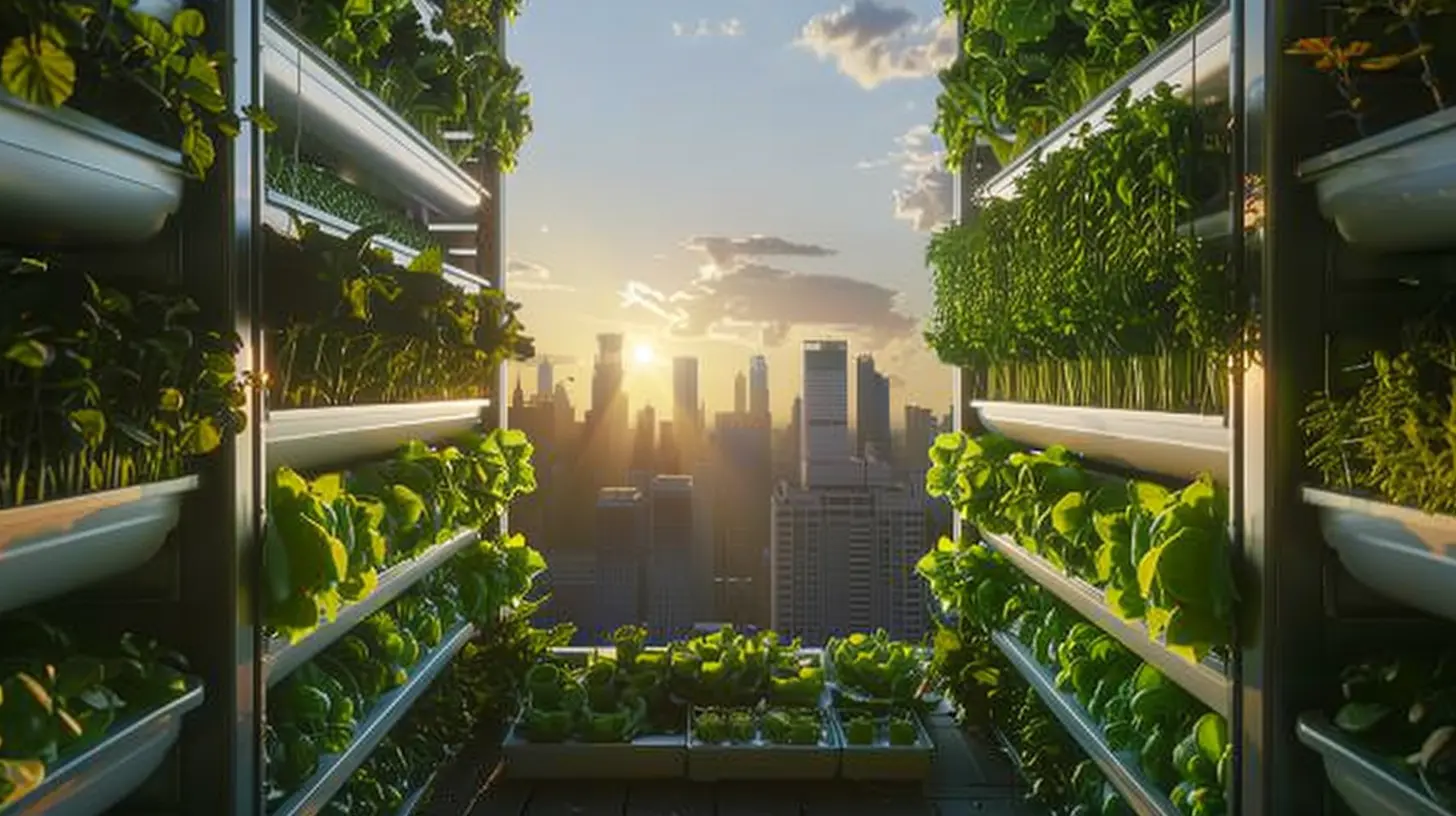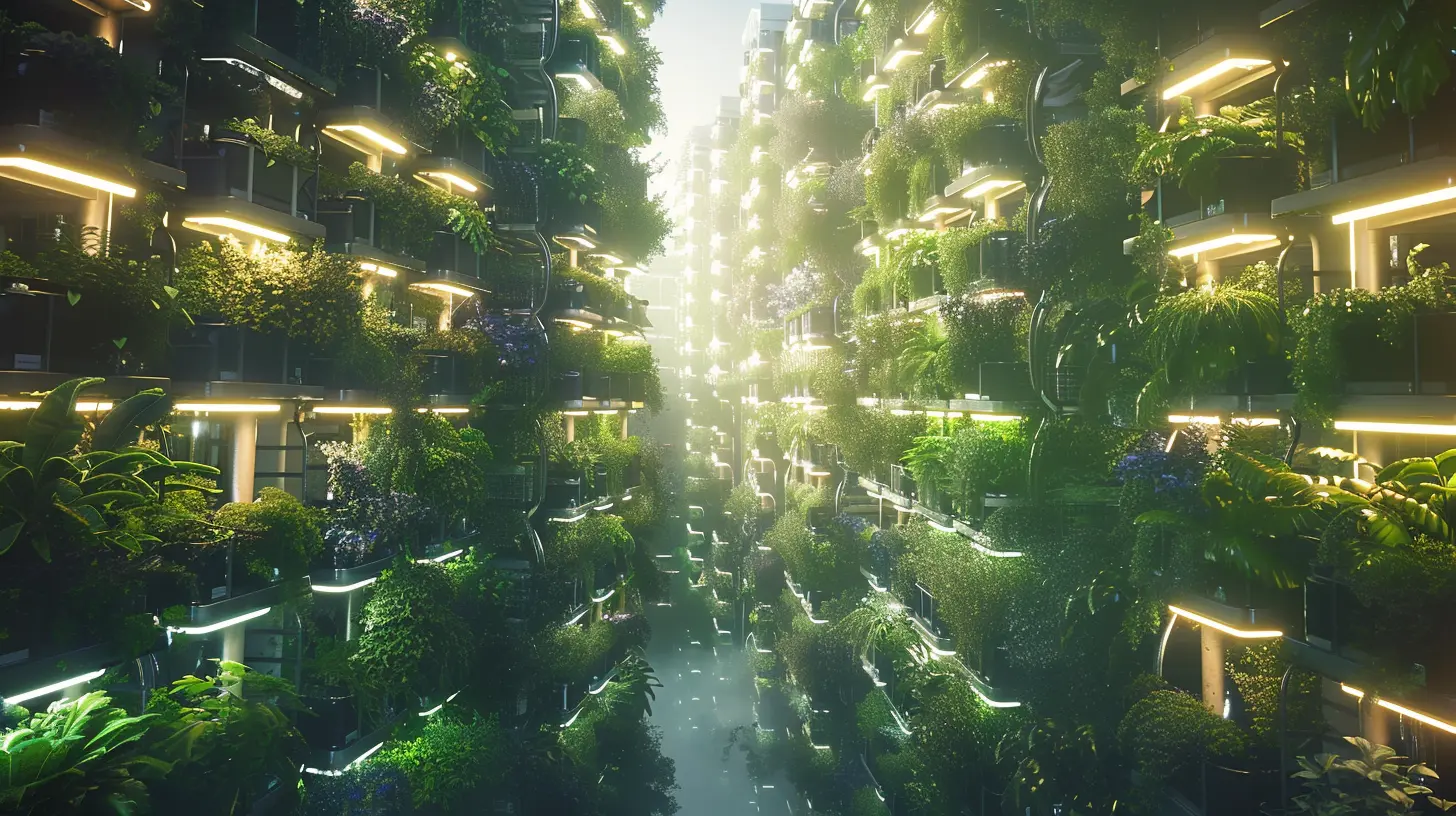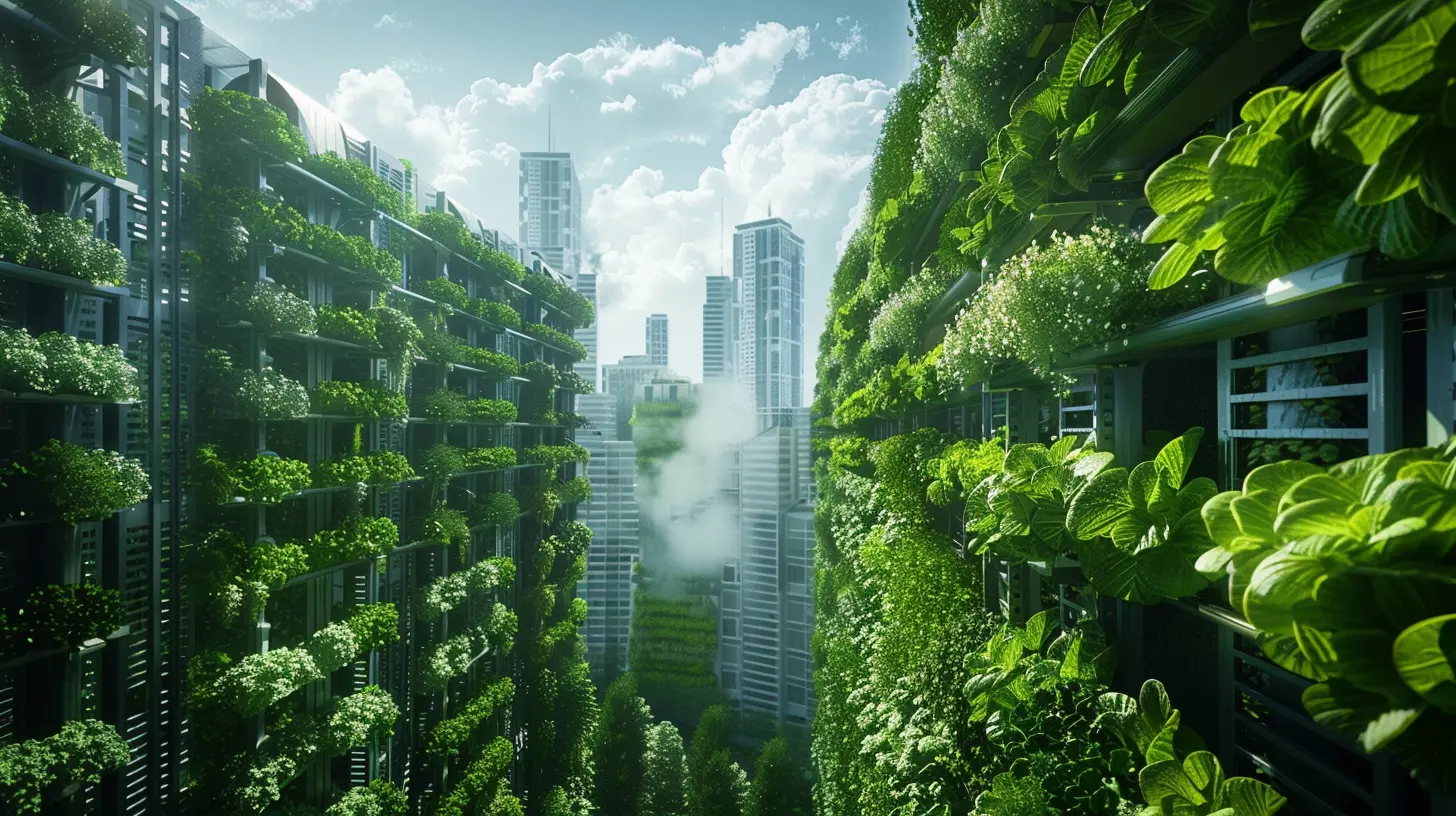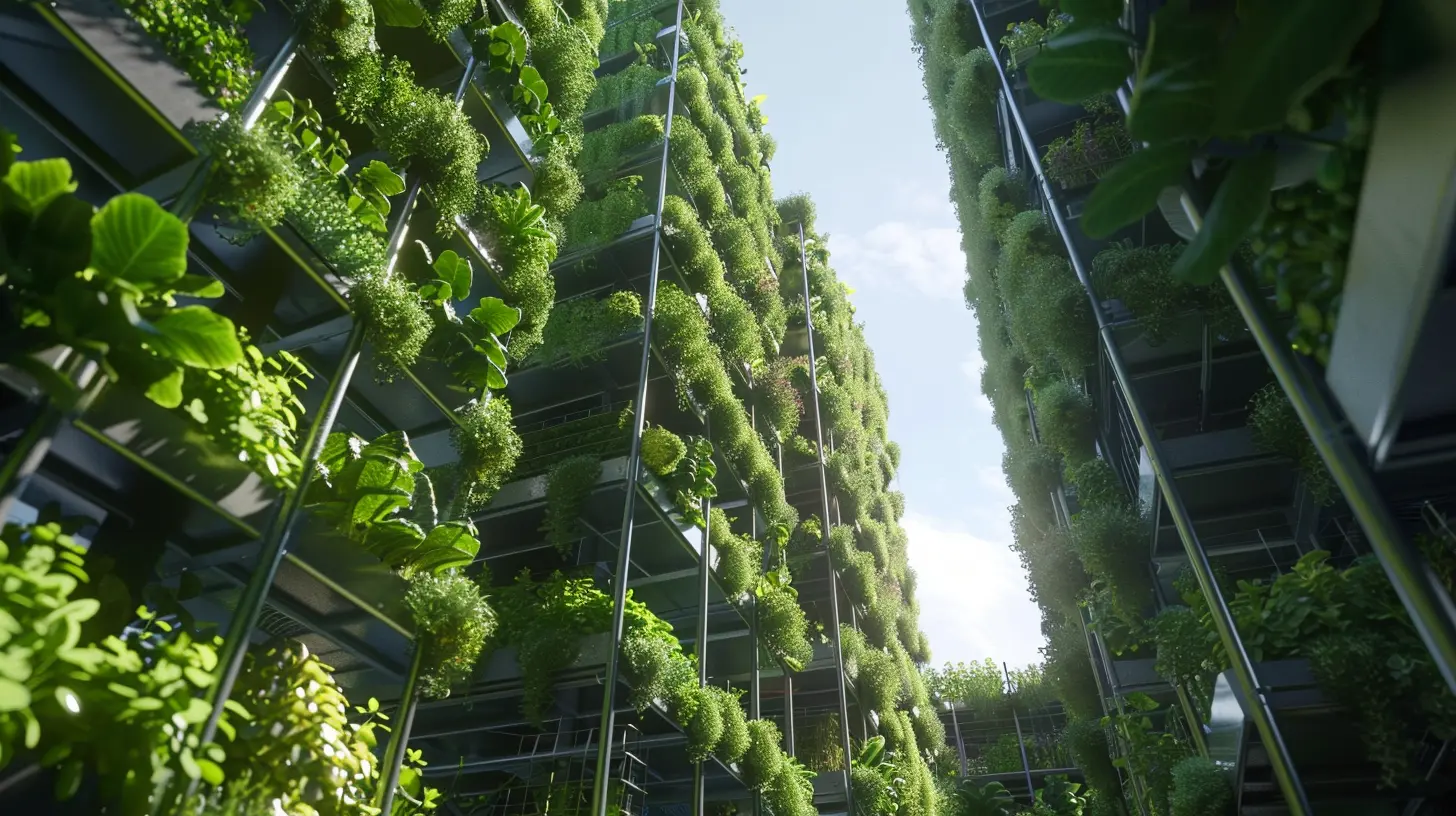Vertical Farms: Sustainable Tech for Urban Agriculture
25 September 2025
Imagine walking through a bustling city and coming across a high-rise not filled with offices or condos, but rows of leafy greens, berries, and herbs growing floor after floor. That’s not a scene from a futuristic movie—it’s happening right now, thanks to vertical farming.
Vertical farms are flipping traditional agriculture on its head (literally), and they might just be the game-changer we need to feed booming urban populations sustainably. Let’s dig into what vertical farms are, why they’re important, and how this cutting-edge tech could be the future of food.
🌱 What Exactly Is Vertical Farming?
Alright, let’s break it down. Vertical farming is the practice of growing crops in stacked layers—kind of like shelves in a library, but for lettuce instead of books. These layers are usually inside buildings, shipping containers, or repurposed warehouses. Instead of relying on soil and natural sunlight, vertical farms often use hydroponics (growing plants in a nutrient-rich water solution), LED lighting, and climate controls to give plants the perfect environment year-round.It’s like giving plants a five-star hotel with room service.
🏙️ Why Do We Even Need Vertical Farms?
Good question. Traditional farming, while still essential, is facing a boatload of problems:- Rural farmland is shrinking due to urban expansion.
- Climate change is throwing off weather patterns, making farming unpredictable.
- Transporting food over long distances adds to carbon emissions and food waste.
- Populations in urban areas are booming—we’re talking more than 68% of the global population living in cities by 2050.
So, how do we grow more food, in less space, using fewer resources, and closer to the people who eat it? Enter vertical farming.
🚀 The Tech Behind Vertical Farms: How Does It All Work?
Okay, this is where things get really cool. Vertical farms aren’t just some glorified plant shelves—they’re high-tech ecosystems.1. LED Grow Lights
Sunlight is free, sure, but it’s not always reliable—especially in windowless buildings. That’s where LED lights come in. These aren’t your regular light bulbs. They’re custom-tuned to emit specific wavelengths to maximize photosynthesis. Plants basically get an all-day spa treatment of perfectly calibrated light.2. Climate Control Systems
You know how we freak out over a sudden change in weather? Plants do too. Vertical farms control temperature, humidity, air quality, and CO₂ levels to keep crops comfortable. Think of it as a smart thermostat, but with biosensors that know exactly what each plant needs.3. Hydroponics & Aeroponics
Most vertical farms ditch soil completely in favor of hydroponics (roots submerged in nutrient-rich water) or aeroponics (roots misted with nutrients). Why? It's cleaner, uses up to 90% less water, and delivers nutrients directly to the plant roots.4. Automation & AI
Data is king, even for plants. Advanced vertical farms are using AI and machine learning to track plant health, predict yields, and optimize growing conditions. Robots even help with planting and harvesting to keep things consistent and super efficient.
💚 The Environmental Perks of Going Vertical
Let’s talk green benefits—literally and figuratively.Less Water Use
Vertical farms can use up to 95% less water than traditional farming. That’s huge, especially in drought-prone regions.Fewer Pesticides
Since these farms are controlled environments, there’s little need for chemical pesticides or herbicides. That means cleaner food and fewer toxins leaching into the environment.Reduced Food Miles
How far did your salad travel to reach your plate? With vertical farms popping up in or near cities, food doesn’t have to go on a cross-country road trip. That cuts down on transport emissions and keeps produce fresher.No Soil Degradation
Traditional farming can strip soil of nutrients over time. But vertical farming doesn’t even use soil, so it skips that problem altogether.🍅 What Can You Grow In A Vertical Farm?
You’re probably wondering—can vertical farms grow everything from watermelons to wheat?Not quite.
Right now, vertical farms mostly grow:
- Leafy greens like lettuce, kale, and spinach
- Herbs like basil, mint, and cilantro
- Strawberries and microgreens
- Some vine crops like tomatoes or cucumbers (a bit trickier but doable)
Heavier crops like potatoes, corn, or wheat? They’re still better suited for traditional or hybrid models—for now, at least.
But research is ongoing, and we’re only scratching the surface. Who knows? Maybe one day vertical farms will be growing entire Thanksgiving dinners.
🌆 Urban Integration: Farms in the Middle of Cities?
Absolutely.One of the coolest things about vertical farms is their ability to fit almost anywhere—rooftops, parking garages, or inside abandoned buildings. Some companies are even installing vertical farming units in grocery stores and restaurants. Imagine picking greens that were harvested just steps away.
And it's not only about food. These spaces can double as community hubs, educational centers, and green oases in concrete jungles.
🤑 Wait, Is Vertical Farming Even Affordable?
Here’s the catch—it’s still a bit pricey.Setting up a vertical farm requires heavy upfront investment in technology, energy, and infrastructure. Energy bills alone (mainly due to lighting and climate control) can be a big chunk.
BUT costs are coming down. As renewable energy becomes cheaper and technology gets more efficient, vertical farming is becoming more viable. Also, producing food closer to consumers reduces logistics and spoilage costs, which helps even things out.
Many startups and big tech giants are betting on this industry. Investment is pouring in. And as demand grows, economies of scale will kick in. So, while we might not replace every farm overnight, we’re heading in the right direction.
🔍 Challenges: It’s Not All Sunshine and Microgreens
We’ve covered the good stuff, but let’s be real. Vertical farming isn’t without its hiccups.High Energy Consumption
Those grow lights and climate systems don’t power themselves. Vertical farms can be energy hogs if not paired with sustainable energy sources.Limited Crop Variety
We touched on it earlier—not every crop loves growing in tight, soil-less, upright spaces. We’ll need more R&D to expand the menu.Technical Failures Can Hit Hard
One glitch in the system—whether it’s lighting, irrigation, or ventilation—could spell disaster for an entire crop. Vertical farms need tight quality control and backup systems.🌍 A Global Look: Who’s Doing It Right?
Vertical farming isn’t just a trend in Silicon Valley. Here are some places making waves:- Singapore: With limited land, Singapore has embraced vertical farming to boost food self-sufficiency. Sky Greens and other companies are leading the charge.
- USA: Companies like AeroFarms, Plenty, and Bowery are scaling up massive vertical farms across the country.
- Japan: After the Fukushima disaster, indoor farming gained momentum as a safe and controlled way to grow food.
- Netherlands: Despite its small size, the Netherlands is one of the top agricultural innovators in the world, using tech-heavy methods like vertical farming to maintain this edge.
🧠 Vertical Farming + Other Future Tech = Mind Blown
Now, imagine combining vertical farming with other bleeding-edge tech:- Blockchain for food traceability
- Drones for monitoring plant health
- 3D Printing to create custom farming components
- Smart sensors and IoT to let farmers control everything from their smartphones
The synergy of these technologies could make food production smarter, cleaner, and way more efficient than ever before.
🤔 So, Will Vertical Farms Feed the World?
That’s a big, juicy question.Can vertical farms singlehandedly feed 10 billion people in the future? Probably not—at least not yet. But they can definitely be part of a larger, more diverse solution. Think of them as one tool in the sustainable agriculture toolbox, alongside regenerative farming, aquaponics, and lab-grown meat.
They’re especially powerful for urban areas with limited space or harsh climates. And as tech continues to evolve, who knows what’s possible?
The bottom line: vertical farming offers a glimpse into a future where food production is smarter, cleaner, and closer to home. It might not be mainstream yet, but all signs point to this trend growing—pun fully intended.
🌿 Final Thoughts
Vertical farms aren’t just a novelty—they’re a necessity in the making. As cities grow and climate issues become more pressing, rethinking how and where we grow food is critical.Sure, there are obstacles. But innovation thrives where challenges exist. And with the tech already available, vertical farming could help us rewrite the rules of agriculture for the 21st century.
So next time you’re munching on a salad in the middle of the city, ask yourself: was this lettuce grown down the street… or up?
all images in this post were generated using AI tools
Category:
Future TechAuthor:

John Peterson
Discussion
rate this article
1 comments
Alana Lopez
Vertical farms offer a promising solution for urban agriculture, maximizing space and resource efficiency. However, challenges like energy consumption and initial costs must be addressed for widespread adoption.
September 25, 2025 at 3:59 AM

John Peterson
Thank you for your insights! You're right—while vertical farms present exciting opportunities for urban agriculture, overcoming energy and cost challenges is crucial for their future success.


